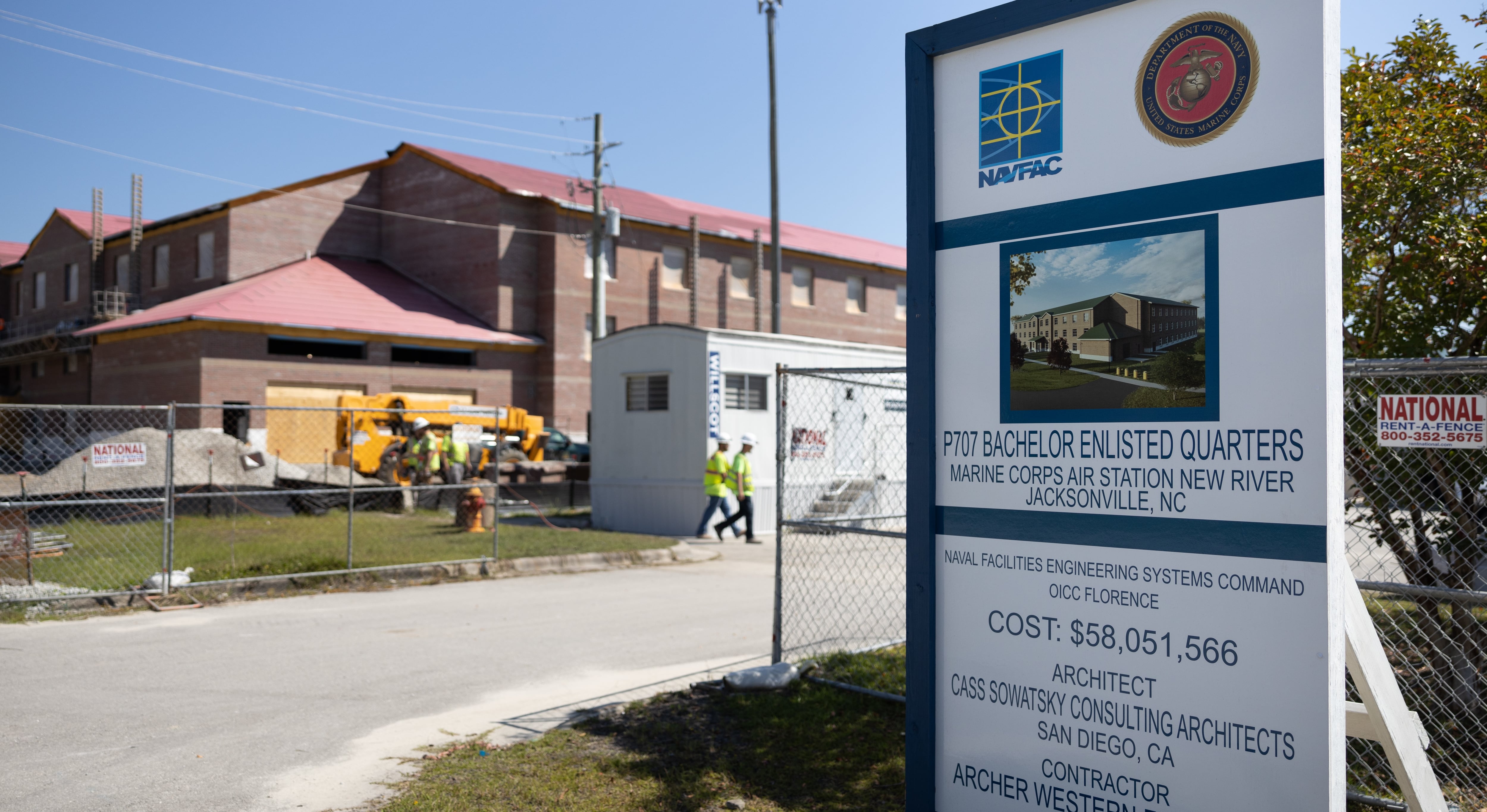Just over four years ago, Marine Corps Base Camp Lejeune, North Carolina, was struck by the powerful Hurricane Florence ― one that devastated much of the installation, other nearby Marine air stations and the lives of many Marines and their families.
Making landfall on Sept. 14, 2018, near Wrightsville Beach in Wilmington, North Carolina, Florence delivered high winds, a massive storm surge and record-breaking rainfall totaling nearly 36 inches, according to the National Weather Service. At the Marine base, several buildings that have been erected as part of the rebuilding efforts in the storm’s aftermath are scheduled to be completed as early as spring 2023, according to a Marine press release.
While Florida continues to endure the brutality of Hurricane Ian — and much of Puerto Rico remains decimated in the aftermath of Hurricane Fiona — the state of construction at Lejeune serves as a reminder of the lasting impact of such serious storms.
Between Lejeune and Marine Corps Air Station New River, North Carolina, 388 buildings sustained roof damage and 319 experienced interior damage.
Additionally, more than 60% of the nearly 6,200 homes across Lejeune, New River and Marine Corps Air Station Cherry Point, North Carolina, were damaged during the storm, which also was responsible for the spillage of an estimated 84,000 gallons of sewage at Lejeune, Marine Corps Times reported.
New construction and repairs at Camp Lejeune, North Carolina, once complete, will come with a price tag of roughly $3.6 billion, as Marine Corps Times previously reported. In the first 22 months following the storm, Congress sent about $3.1 billion of that total to the Corps, according to another press release.
The cost is a combination of “31 projects that include demolition and new military construction ($2.0B) as well as repairs to existing buildings ($1.3B),” Maj. Brian Block, a Marine spokesman, previously told Marine Corps Times. “The remaining $300M would go to replacements for destroyed IT system and other repairs.”
Progress, however, is well underway, with renovations ongoing and new construction nearing completion.
All buildings that sustained roof damage now have standing-seam metal roofs, the release stated, and over 56% of the contracted building repairs are now complete. The rest of the renovations are scheduled to be finished by next fall.
More than 3,000 homes already have been repaired, and fixes to nearly 150 more homes are anticipated by spring 2023, according to Staci Burton of Atlantic Marine Corps Communities.
During a symbolic groundbreaking ceremony in April 2021 that marked the start of rebuilding efforts at Lejeune, North Carolina, and the other air stations, U.S. Navy Capt. Miguel Dieguez, who then worked on the base’s Facilities & Environment team, talked about the lessons learned from Hurricane Florence.
“We’ve changed our building standards to sustain what are more common extreme destructive weather events,” Dieguez said in a release, referencing new requirements for metal roofs and hangar doors.
The first new building, a fire station located at Courthouse Bay, is slated for completion in spring 2023. A simulation center for II Marine Expeditionary Force also is expected to be ready by then.
Between 2023 and 2025, additional replacement infrastructure is scheduled to become available, including “headquarters buildings, school houses, mess halls” and a number of other new facilities and supply bridges.
“By 2025, these installations will have undergone one of the most extensive transformations in their proud history,” Brig. Gen. Andrew Niebel, Lejeune’s commanding general, said in the release.
“Every facility, every structure will be designed to make sure our warfighters, families and base employees have optimal spaces to live, work and train to ensure a ready force.”
Jonathan is a staff writer and editor of the Early Bird Brief newsletter for Military Times. Follow him on Twitter @lehrfeld_media





